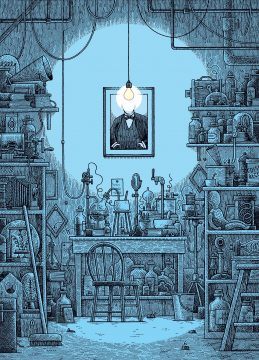Casey Cep in The New Yorker:
 There were ideas long before there were light bulbs. But, of all the ideas that have ever turned into inventions, only the light bulb became a symbol of ideas. Earlier innovations had literalized the experience of “seeing the light,” but no one went around talking about torchlight moments or sketching candles into cartoon thought bubbles. What made the light bulb such an irresistible image for ideas was not just the invention but its inventor.
There were ideas long before there were light bulbs. But, of all the ideas that have ever turned into inventions, only the light bulb became a symbol of ideas. Earlier innovations had literalized the experience of “seeing the light,” but no one went around talking about torchlight moments or sketching candles into cartoon thought bubbles. What made the light bulb such an irresistible image for ideas was not just the invention but its inventor.
Thomas Edison was already well known by the time he perfected the long-burning incandescent light bulb, but he was photographed next to one of them so often that the public came to associate the bulbs with invention itself. That made sense, by a kind of transitive property of ingenuity: during his lifetime, Edison patented a record-setting one thousand and ninety-three different inventions. On a single day in 1888, he wrote down a hundred and twelve ideas; averaged across his adult life, he patented something roughly every eleven days. There was the light bulb and the phonograph, of course, but also the kinetoscope, the dictating machine, the alkaline battery, and the electric meter. Plus: a sap extractor, a talking doll, the world’s largest rock crusher, an electric pen, a fruit preserver, and a tornado-proof house.
More here.
